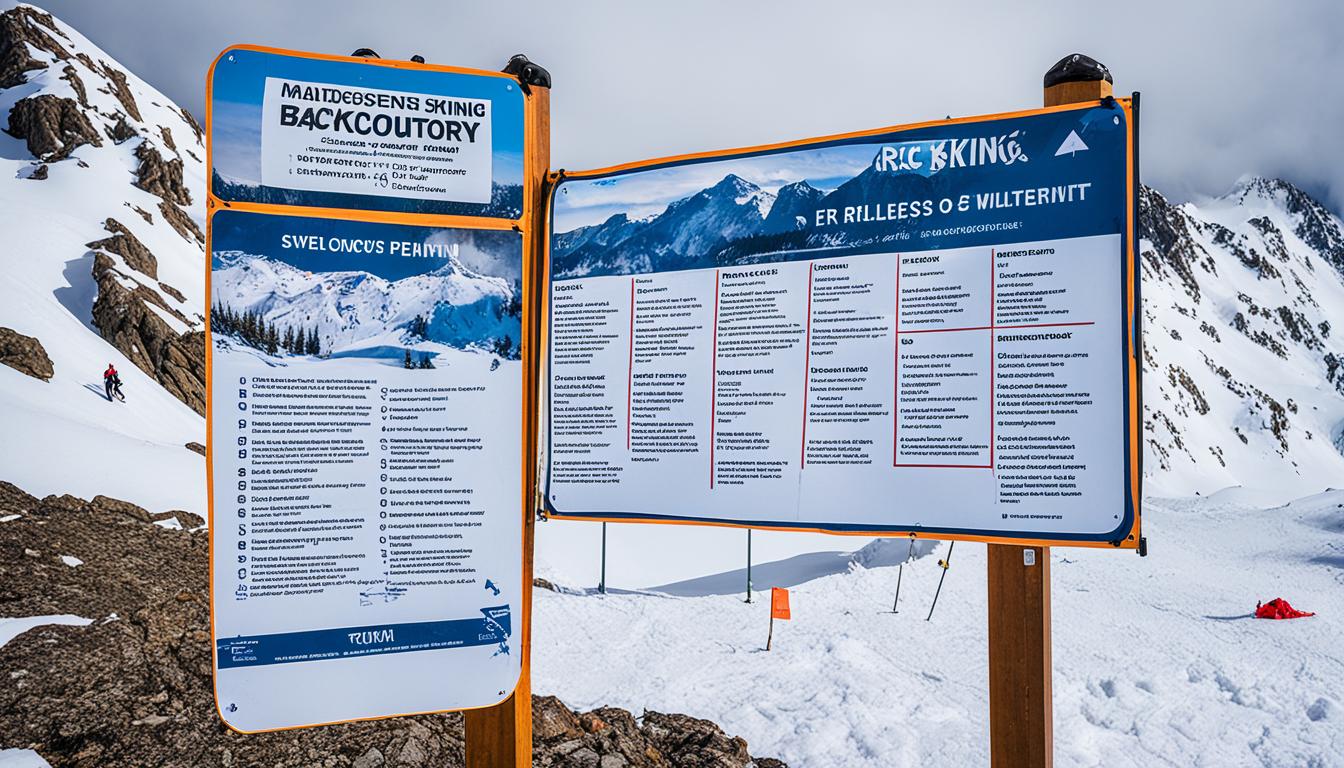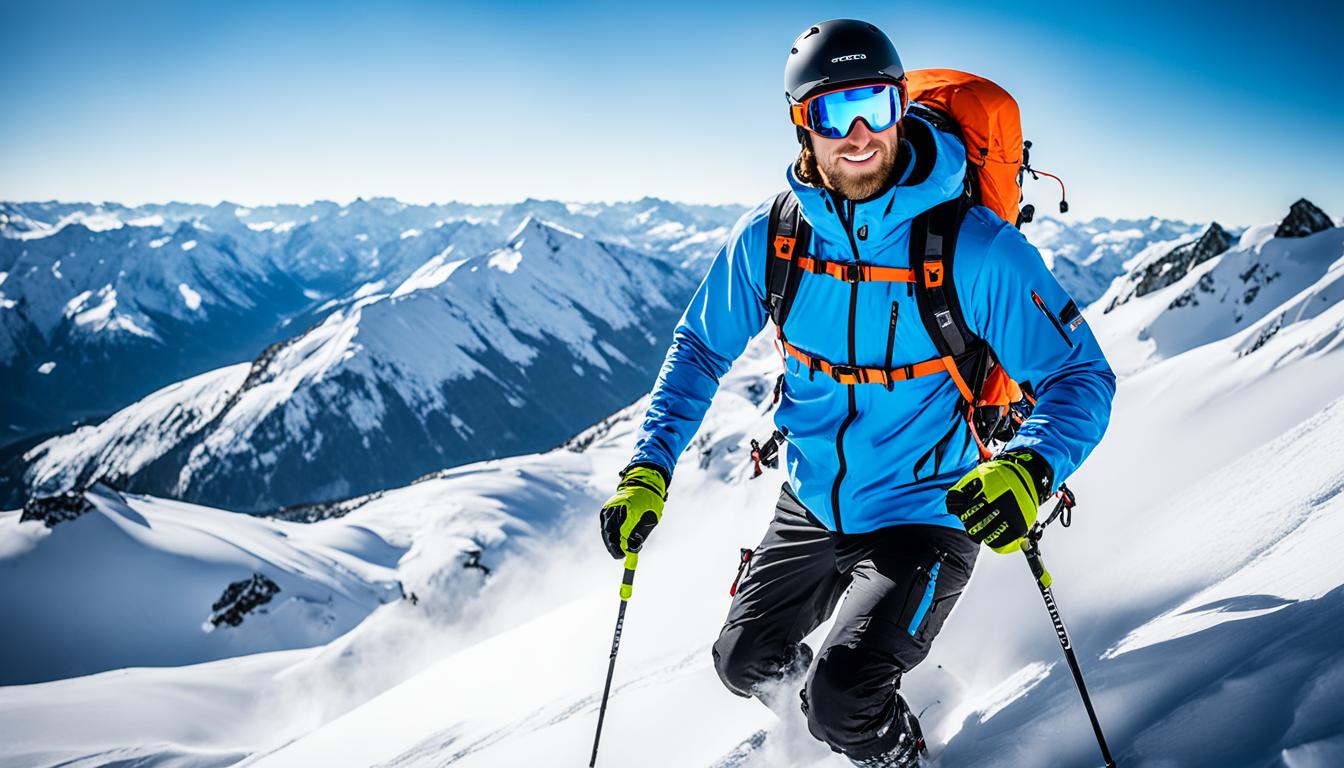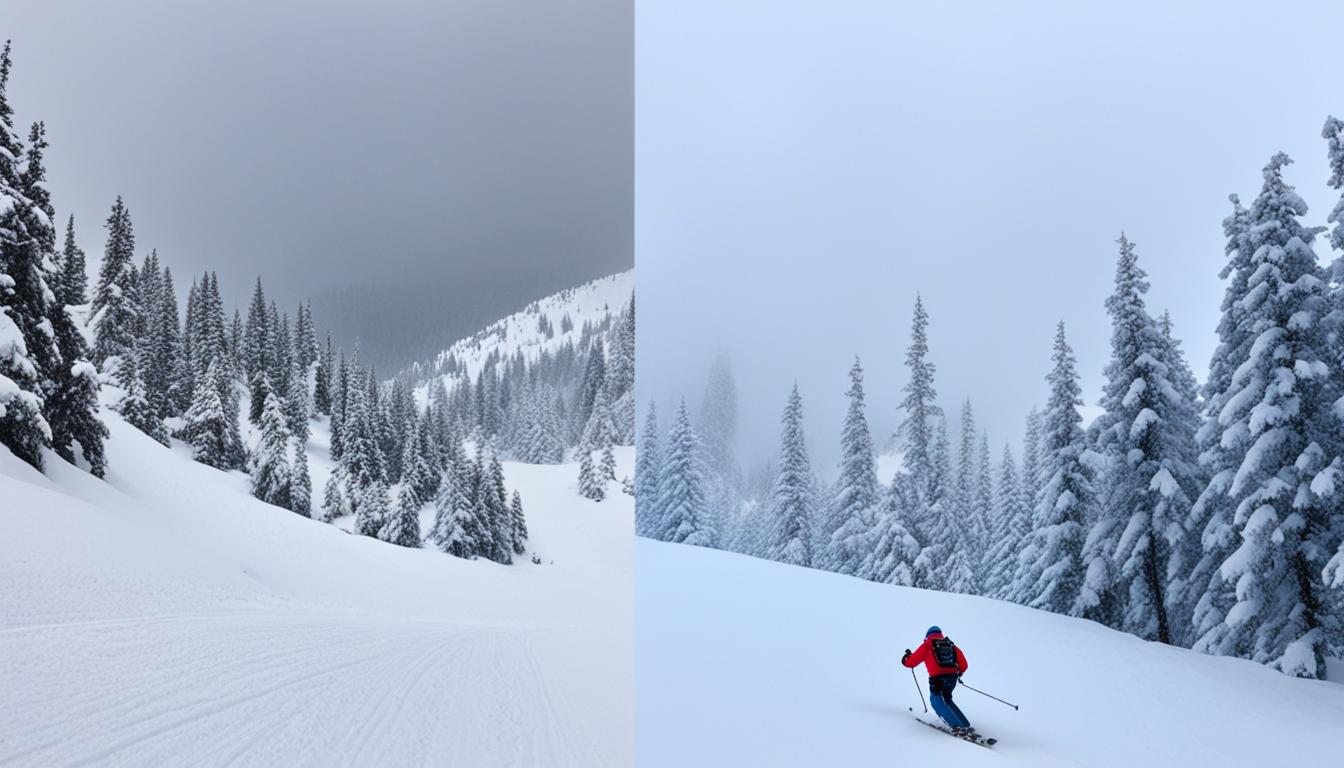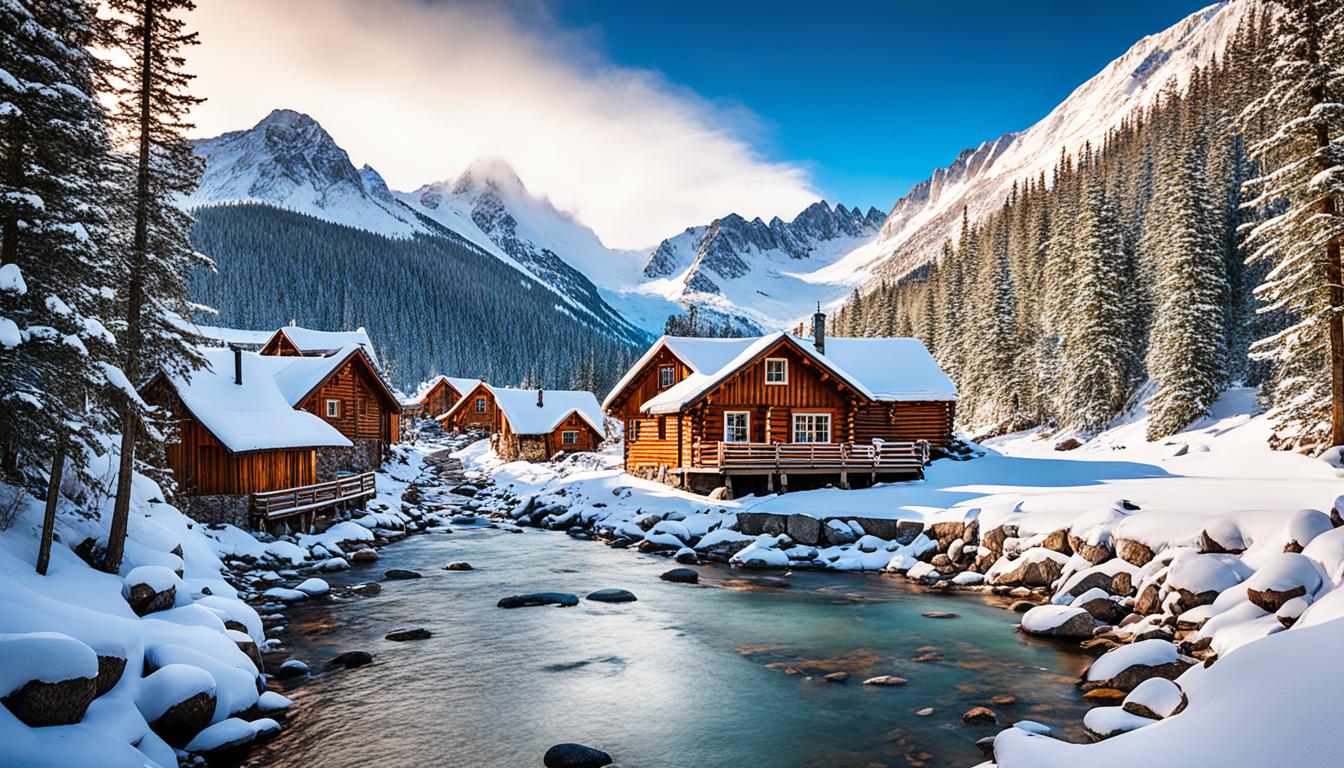Backcountry skiing brings unforgettable adventure for those who love the outdoors. It’s vital to know about the rules and permits needed for a safe and legal journey. In this guide, we’ll cover the types of backcountry skiing, gear, skills, planning, ethics, and learning opportunities. With this knowledge, hit the backcountry slopes with confidence.
Key Takeaways
- Backcountry skiing enthusiasts should familiarize themselves with the regulations and permits to ensure a safe and legal experience.
- Types of backcountry skiing include ski touring, ski mountaineering, ski traverses, and mechanized skiing/riding.
- Essential gear for backcountry skiing includes skis/splitboards, avalanche safety gear, appropriate clothing and footwear, navigation tools, and a first aid kit.
- Proper planning, including researching terrain, weather conditions, and potential hazards, is crucial for a safe backcountry skiing experience.
- Continuing education, such as avalanche courses and wilderness first aid training, helps improve skills and stay up to date with regulations and safety guidelines.
Understanding the Types of Backcountry Skiing and Riding
Backcountry skiing is thrilling and immersive. Yet, before starting, know the different types and the rules. Safety is a big part.
Backcountry ski touring is very popular. It means skiing or splitboarding using your power in wild areas. You’ll see untouched mountains and enjoy the quiet. Remember, knowing the rules and safety principles is key for a good time.
Ski mountaineering is thrilling too. It mixes skiing and climbing. People do it in icy or not icy areas. They test their skills to the max. Make sure to understand the rules and get any needed permits. This keeps you safe and nature sound.
“Ski traverses are multi-day trips that traverse across mountain ranges or remote terrain, providing an incredible opportunity to explore vast wilderness areas. These extended adventures require careful planning, adherence to backcountry ski regulations, and an understanding of the necessary ski safety rules.”
Mechanized skiing/riding means using machines to get to wild places. Snowmobiles or helicopters help. This way you can travel more but you still need to follow rules and get permits.
To sum up, backcountry skiing has many forms. Each needs the right gear, training, and respects the rules. By learning about these, along with the regulations and safety rules, you can enjoy your skiing safely and responsibly.
Essential Gear and Equipment for Backcountry Skiing
Backcountry skiing needs the right gear for safety and fun. It doesn’t matter if you’re new or experienced, proper equipment prepares you well. Here’s what you’ll need:
Skis or Splitboard
Choosing the right skis or splitboard is first. Backcountry skis give stability and control on all terrains. For snowboarders, a splitboard turns into skis for climbing and back to a board for going down.
Avalanche Safety Gear
In the backcountry, avalanche gear is essential. This includes a beacon to find buried people, a shovel to dig them out, and a probe to locate them under snow. These items can be life-saving if an avalanche occurs.
Clothing and Footwear
Staying warm and dry during backcountry skiing is vital. Start with moisture-wicking base layers, add insulating layers, and finish with a waterproof shell. Also, wear waterproof gloves, a hat, and boots suitable for the backcountry.
Navigation Tools
Good navigation tools are crucial for backcountry skiing. Carry a map, compass, or GPS to find your way. Practice using these tools to be prepared.
First Aid Kit
Bringing a comprehensive first aid kit is a must. Accidents can occur, and proper medical supplies can help. Include bandages, antiseptics, pain relievers, and any personal medications in your kit.
Food, Water, and Emergency Supplies
Have enough food, water, and emergency supplies just in case. Bring snacks, water, or a filtration system, and extra clothing for weather changes. Also, take along a fire starter, an emergency blanket, and a signaling device for rescues.
Research and Permit Requirements
Study the backcountry area’s rules and get any necessary permits or access fees. Some places have strict laws to protect the area or manage the number of skiers. It’s important to be compliant and avoid trouble.
With the correct gear and knowledge of the laws, you can enjoy backcountry skiing safely and responsibly. Preparation is key for a great and mindful backcountry skiing adventure.
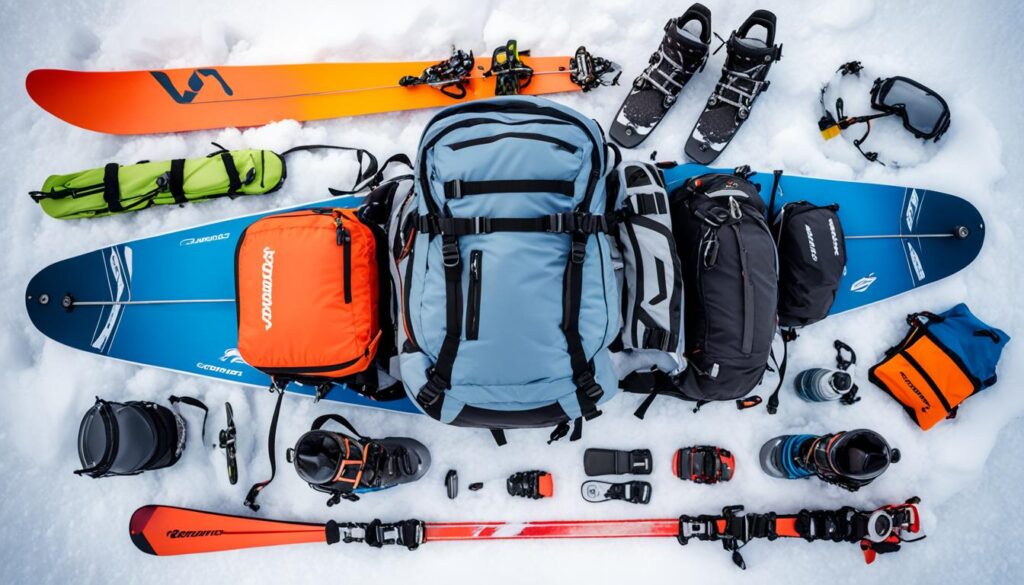
Planning Resources and Safety Considerations for Backcountry Skiing
Proper planning is essential for a safe and fun backcountry skiing trip. Think about the terrain, weather, and potential dangers in the area you’ll be exploring.
Get to know the terrain well. Use maps, guides, and online resources to learn about your skiing route.
Route-Finding and Avalanche Safety
Learning about route-finding and avalanche safety is crucial. Take a course on avalanche safety. You’ll learn about analyzing snow, assessing land, and how to rescue people.
Before going, always check the avalanche forecast and snow conditions. Look out for recent avalanches or unstable snow. Being ready and knowing what to do can keep you safe.
Restrictions and Regulations: Skiing in Protected Areas
To avoid issues, know the rules for backcountry skiing in protected areas. Some places need permits or have specific rules to protect nature and wildlife. Make sure you follow all rules to keep nature beautiful and stay out of trouble.
You can get info on rules from:
- The U.S. Forest Service (USFS) website
- National Park Service (NPS) websites
- State-specific backcountry skiing guides and websites
Always check for updates on the rules before your trip.
Mountain Ethics and Responsible Recreation
When skiing in the backcountry, follow these ethics and guidelines:
“Leave no trace”: Carry out all your garbage and dispose of it rightly.
Observe wildlife from a distance to respect their space.
Stick to the trails and avoid harming plants.
Be nice to others and have a helpful attitude.
By following these values, you help keep the area beautiful and safe for everyone.
Stay safe in the backcountry by always putting safety first. With the right planning and respect for nature and its rules, you’ll have a great and safe skiing trip.
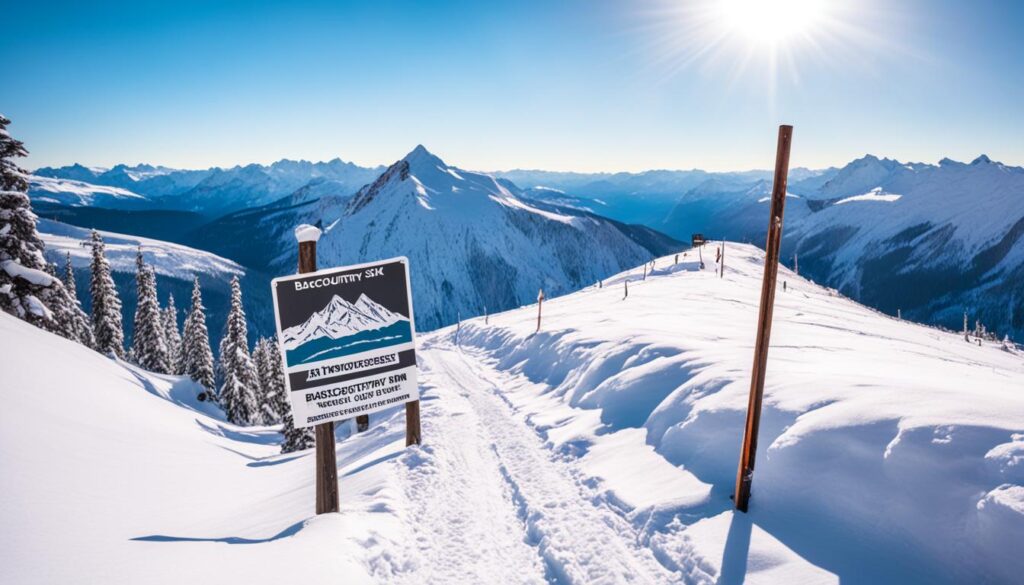
Continuing Education and Improving Skills in Backcountry Skiing
Backcountry skiing is thrilling but needs ongoing education and skill improvement. It’s important to know the ski safety rules and the laws of backcountry skiing. Taking avalanche courses can teach you to measure snow conditions and lower risks.
It’s also key to know first aid for the wilderness. This training can help with injuries or emergencies in remote locations.
Guided trips or mentor programs offer valuable knowledge. You’ll learn from experienced backcountry skiers, picking up skills that books or online guides can’t match.
Staying updated on backcountry skiing rules and safety tips is crucial. Laws are in place to keep skiers safe and protect the environment and animals. Your knowledge and respect for these rules help preserve the backcountry for future skiers.
Keep learning and improving to make your backcountry skiing safer and more fun. It doesn’t matter if you’re just starting out or if you’ve been skiing for years. Always look for chances to learn and grow in backcountry skiing.
FAQ
What types of backcountry skiing are there?
There are a few types of backcountry skiing. This includes touring, mountaineering, traversing, and mechanized skiing or riding.
What gear and equipment do I need for backcountry skiing?
For backcountry skiing, you’ll need essentials like skis or a splitboard. Also, avalanche safety gear, the right clothing and shoes, navigation aids, and a first aid kit.
Are there any permit requirements for backcountry skiing?
Yes, in some places, you’ll need permits or pay access fees. Make sure to check the rules for the backcountry spots you want to visit.
How can I plan for a safe backcountry skiing experience?
Start by researching where you’ll go. Look into the terrain, weather, and any dangers. It’s also important to know how to avoid avalanches and find your way.
What are the safety considerations and restrictions for backcountry skiing in protected areas?
You must follow the rules when skiing in protected areas. These include knowing the do’s and don’ts on the mountains and being a responsible skier.
How can I improve my skills and knowledge in backcountry skiing?
To get better, take avalanche classes and learn first aid. Going on guided trips is another great way to improve and learn the latest in backcountry skiing.

